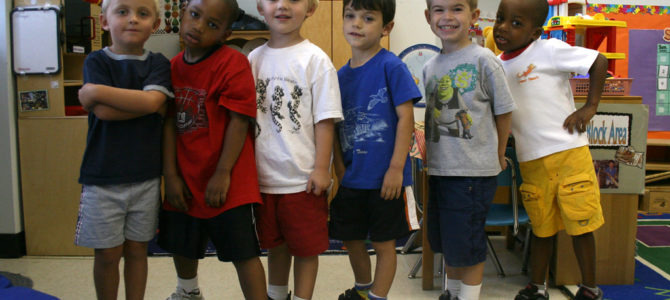
When you’re the mom of a big family, you get a lot of questions from the kids. It’s not easy to bewilder me. But I was gobsmacked when my 10-year-old came home from school and said, “Mom, I need to know: Are we segregationists?”
After confirming we all understood what a segregationist was, I realized my child had a point. Our Catholic school had unexpectedly closed down, so we enrolled the kids in the local public school, which is predominately white. I had to explain to my child that while we are decidedly not segregationists, our public education system—which divides people based on ZIP codes and district lines—is, in fact, creating de facto segregation.
These lines appear to be arbitrary, but they’re not: They provide wealthy neighborhoods safe, quality education, and they trap low-income and minority students in failing and dangerous districts.
At my child’s former school—one of the many Catholic schools in the greater Philadelphia area—there were many children of color and immigrants. These kids didn’t have to be lectured on how to be “antiracists.” Instead, they shared a classroom with children who had different skin colors, experiences, and traditions. Their homes didn’t look the same, and neither did their neighborhoods.
How did they get this experience? Educational choice. Thanks to tax-credit scholarships given to families through private donations, several of my child’s classmates had been able to attend a private school. Because of this, the common thread among the students in our Catholic school—the shared identity that mattered—was that they were all attending the school best-suited for their educational needs.
Teachers’ unions and administrators in wealthy districts talk a big game about diversity and inclusion, until it comes to letting kids from “other school zones” into their classrooms. That most schools would rather design a diversity and equity program than fight for school choice, which would actually achieve diversity and equity in the classroom, is an indication that the system is broken. That’s especially since a majority of minorities, including 66 percent of black Americans, support school choice.
Our district’s summer reading list solidifies this belief. One of the recommended books is a kid’s version of “Stamped” by Ibram Kendi. The book says it will teach kids to “learn how to identify and stamp out racist thoughts in their own lives.” It’s the latest installment—along with critical race theory—in teaching our kids that their skin color is more important than their God-given gifts and what they can accomplish with them.
I refuse to let my kids believe that. I don’t want my kids—or any child—being taught that children of color do not have agency. And I’m not the only one.
In Florida, a black mother of two children named Quisha King is taking a stand against critical race theory being taught in public school classrooms. She told the Florida Board of Education, “It is sad that we are even contemplating something like critical race theory, where children will be separated by their skin color and deemed permanently oppressors or oppressed in 2021. That is not teaching the truth, unless you believe that whites are better than blacks.”
Our country’s greatest achievements in civil rights were led by black people who refused to believe the system was stronger than they were. Many Black Americans have consistently demonstrated our country’s greatest virtues: mental toughness, resilience, and grit in pushing our country forward to achieve the promise of the Declaration of Independence.
The great legacy of the civil rights movement is to ensure all children are taught they have greatness inside of them and feel empowered to shape our nation for the better. This is something that my children, and their friends, learned alongside one another in Catholic school.
That spirit of community and believing in one another—regardless of race—has been lost in public school. For that reason, we might not be going back.








